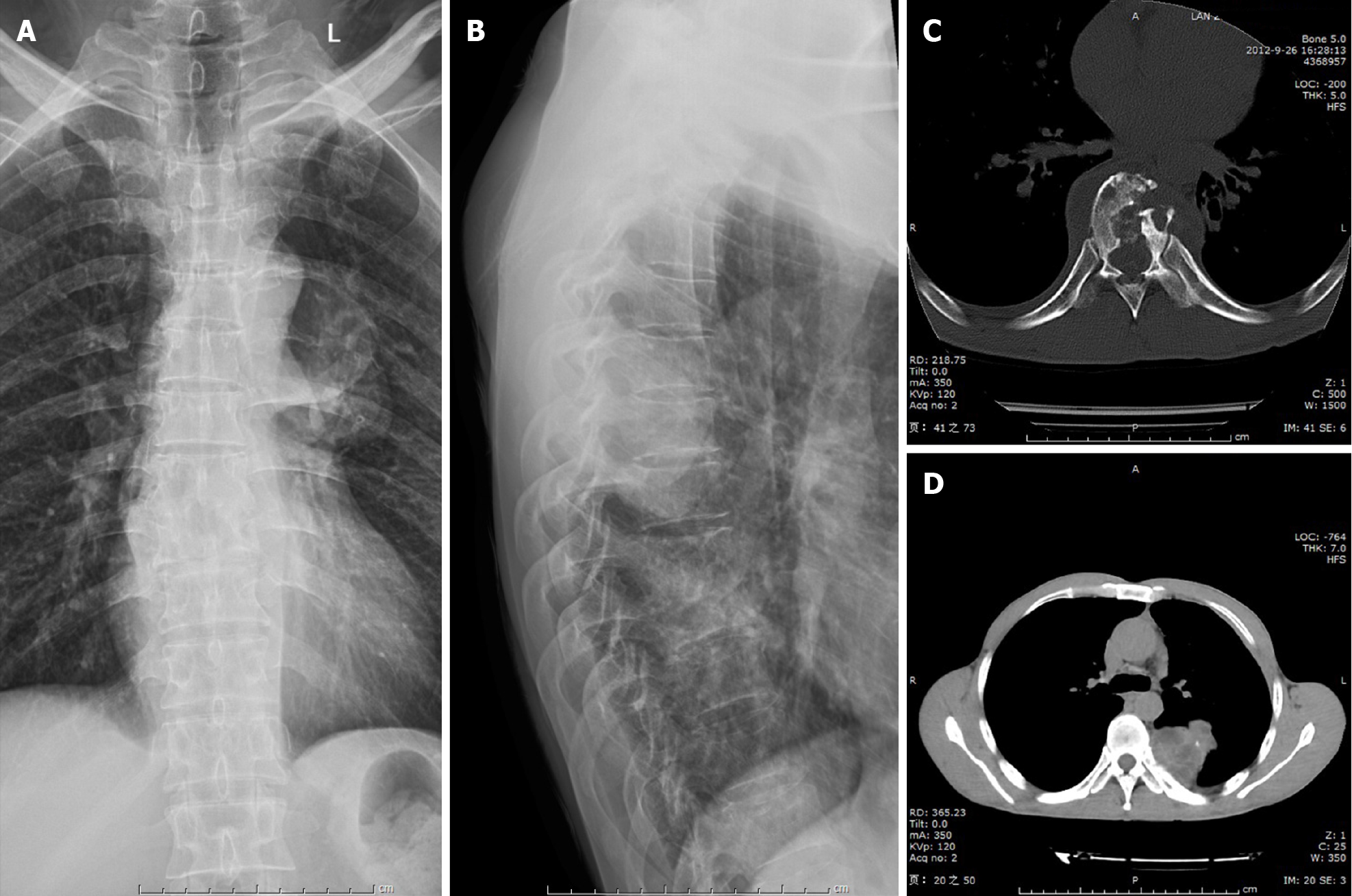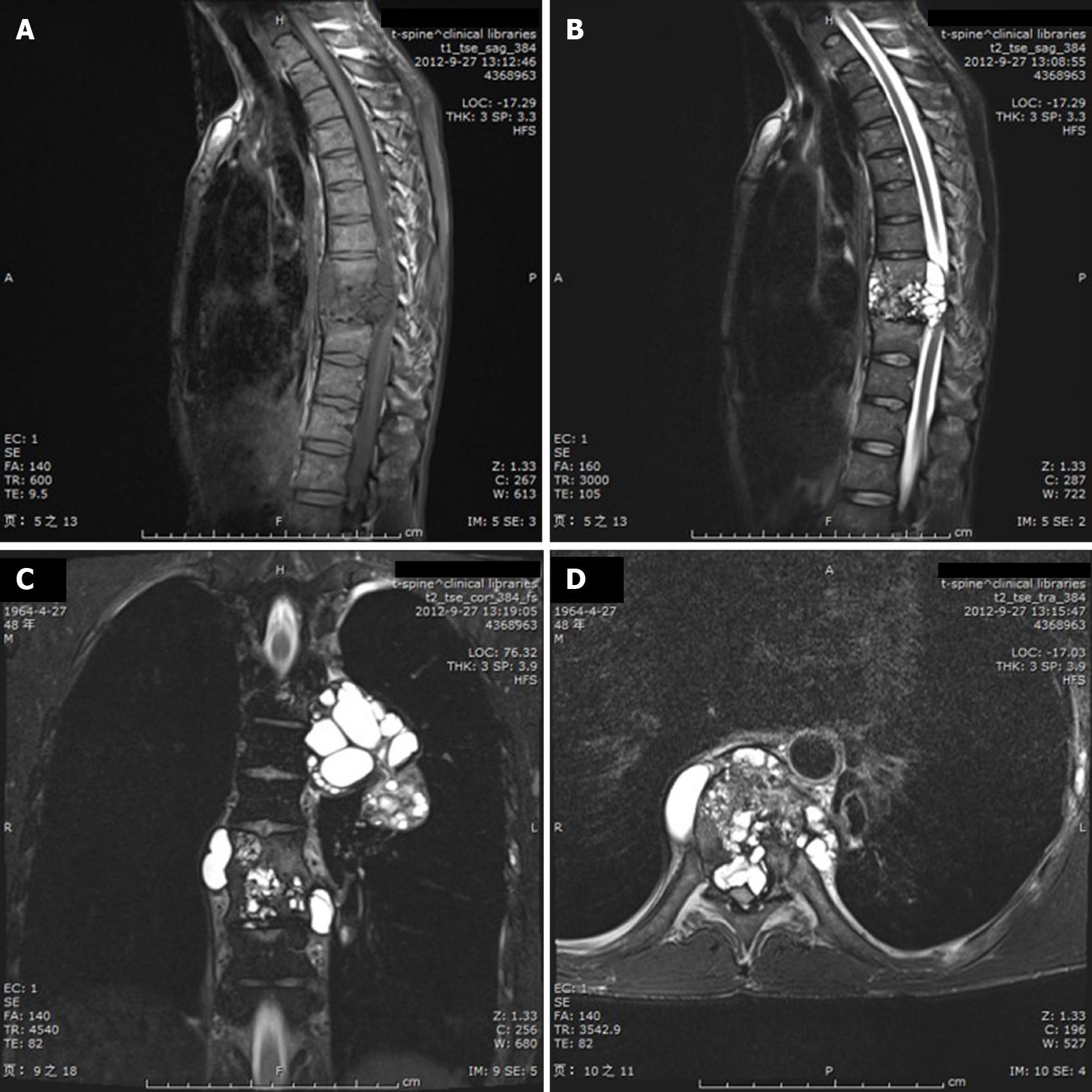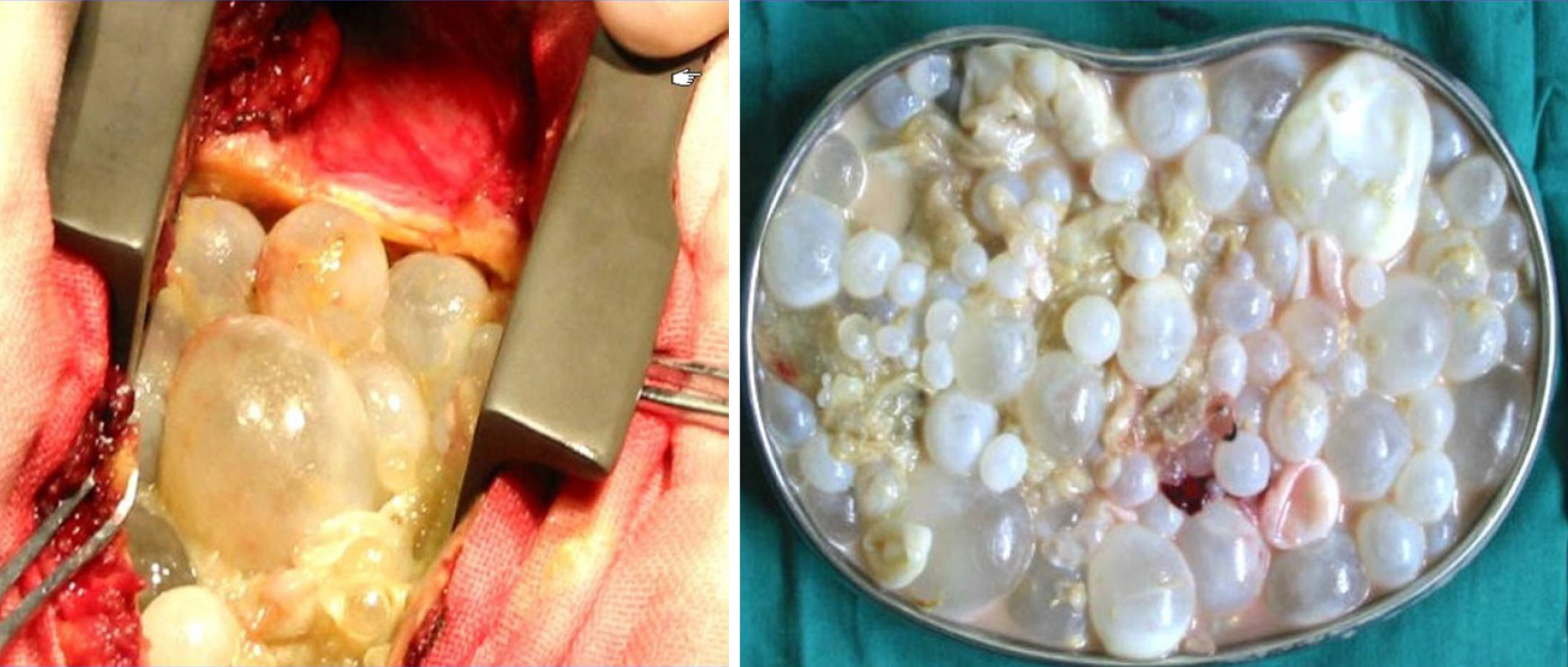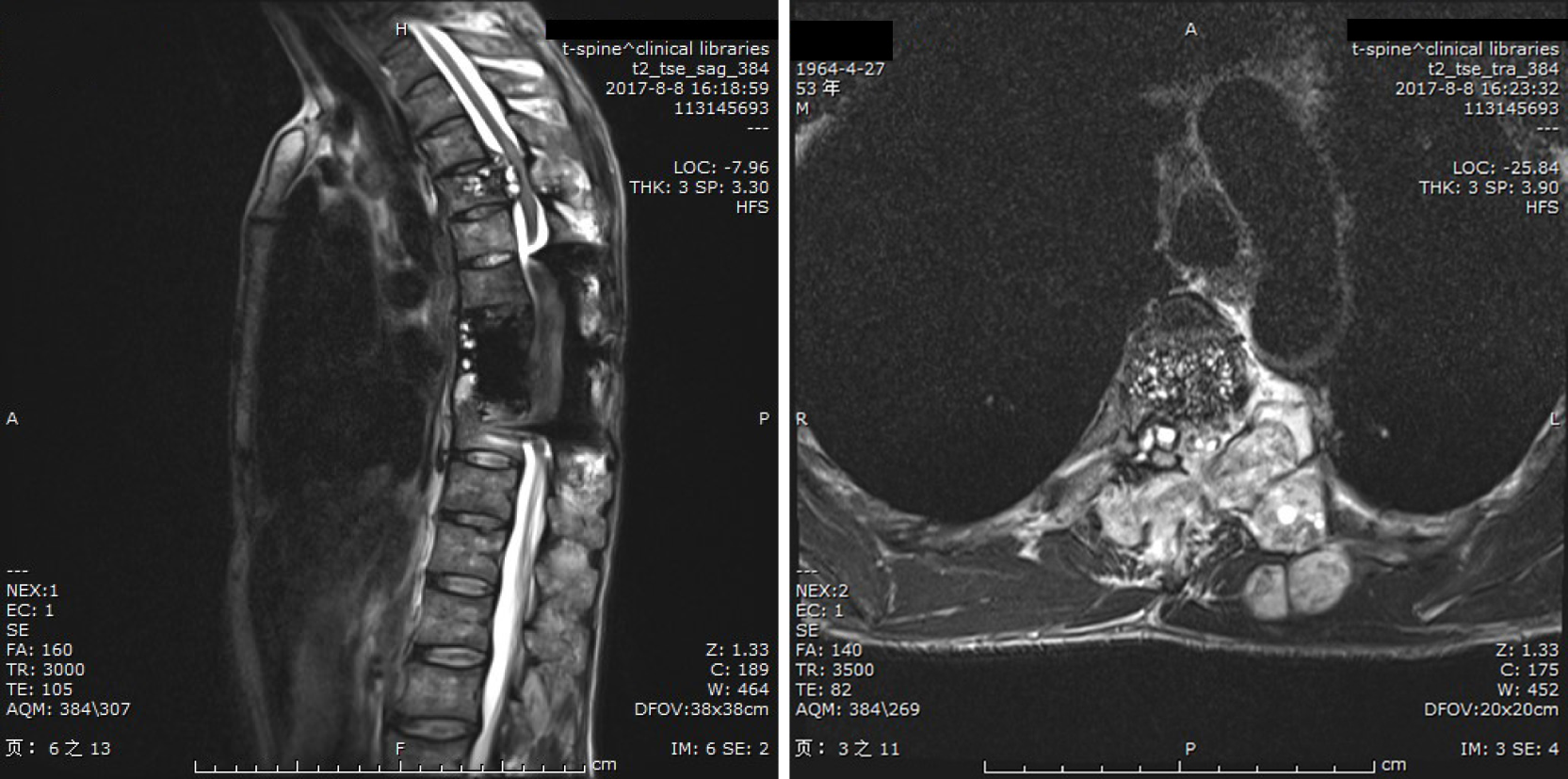Copyright
©The Author(s) 2021.
World J Clin Cases. Nov 26, 2021; 9(33): 10337-10344
Published online Nov 26, 2021. doi: 10.12998/wjcc.v9.i33.10337
Published online Nov 26, 2021. doi: 10.12998/wjcc.v9.i33.10337
Figure 1 Radiographs and computed tomography.
A and B: The radiograph image reveals height loss of T8-9 discs and T9 vertebra; C and D: Axial computed tomography shows marked destruction of the T8, T9 vertebrae, and the low-density soft tissue mass with calcification in the lung and paravertebral area.
Figure 2 Magnetic resonance imaging shows extradural-intraspinal and paravertebral lesions.
A: T1-weighted image reveals unhomogeneous hypointense in the paravertebral areas and spinal canal; B-D: T2-weighted images reveal multiple areas of hyperintense lesion and spinal cord compression.
Figure 3
Appearance of the cysts during and after surgical excision.
Figure 4
The thoracic magnetic resonance imaging (in 2017) shows irregular lesions in the spinal canal and paravertebral.
Figure 5 Computed tomography and magnetic resonance imaging.
A: Postoperative computed tomography (in 2019) reveals good intervertebral bone graft fusion; B and C: Postoperative magnetic resonance imaging (in 2019) illustrates that there are still hyperintensity lesions in the paravertebral area.
- Citation: Zhang T, Ma LH, Liu H, Li SK. Incurable and refractory spinal cystic echinococcosis: A case report. World J Clin Cases 2021; 9(33): 10337-10344
- URL: https://www.wjgnet.com/2307-8960/full/v9/i33/10337.htm
- DOI: https://dx.doi.org/10.12998/wjcc.v9.i33.10337

















